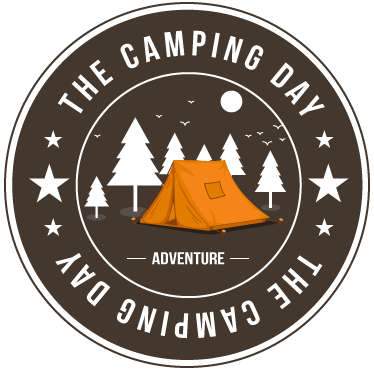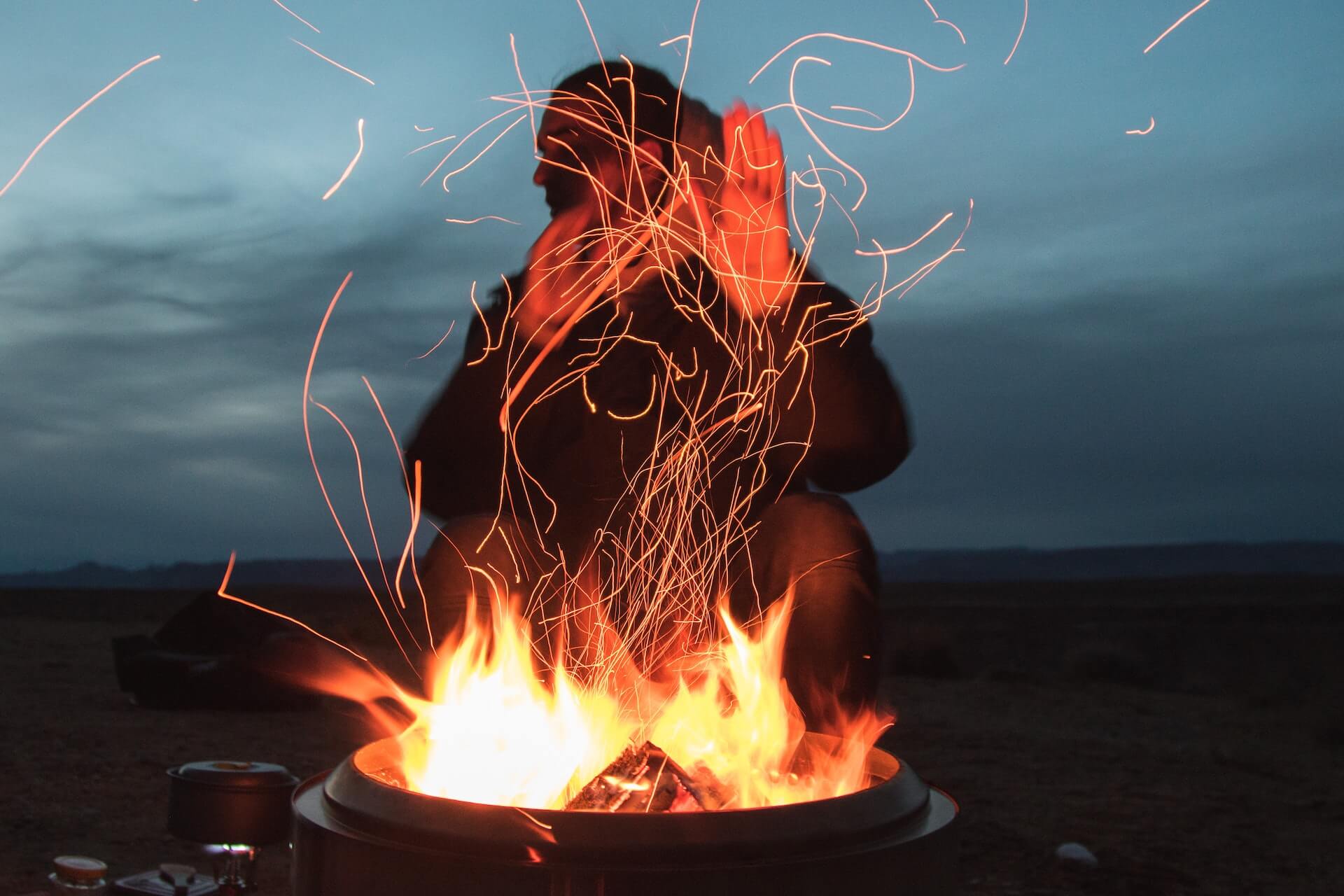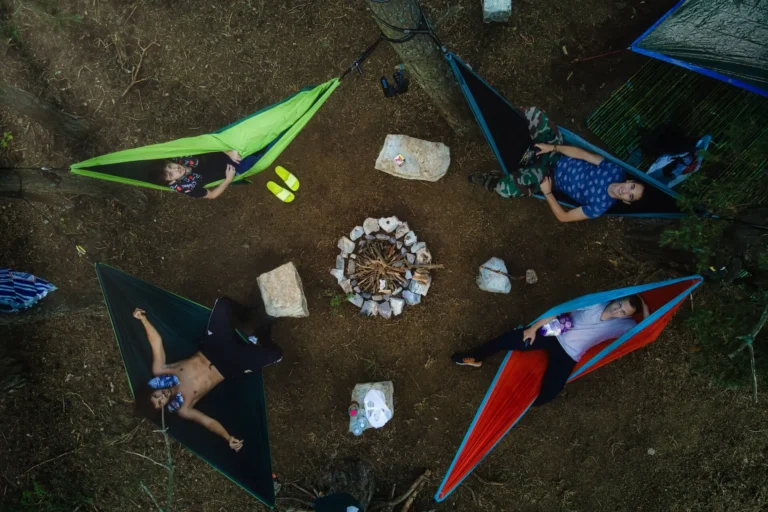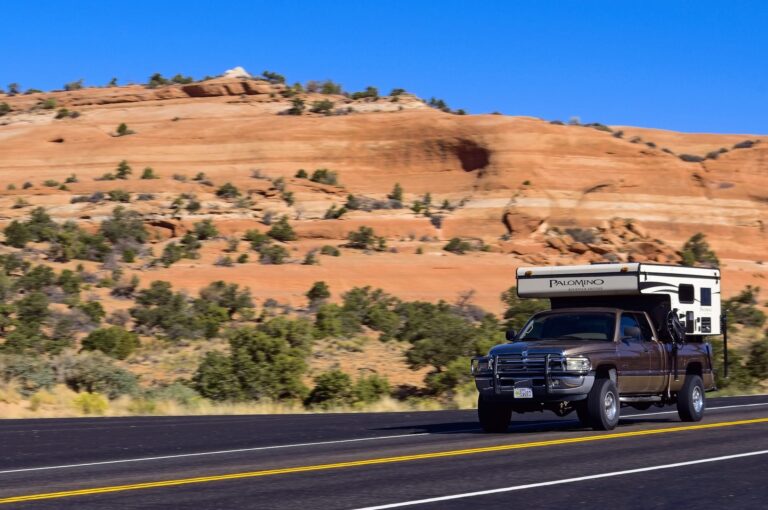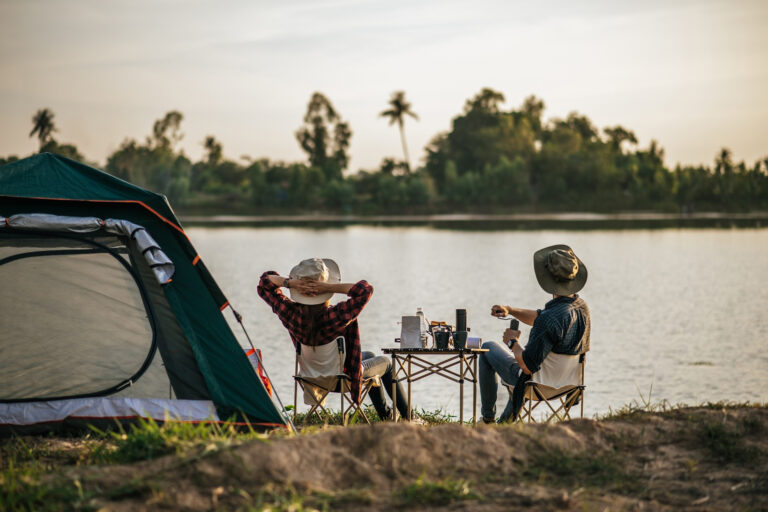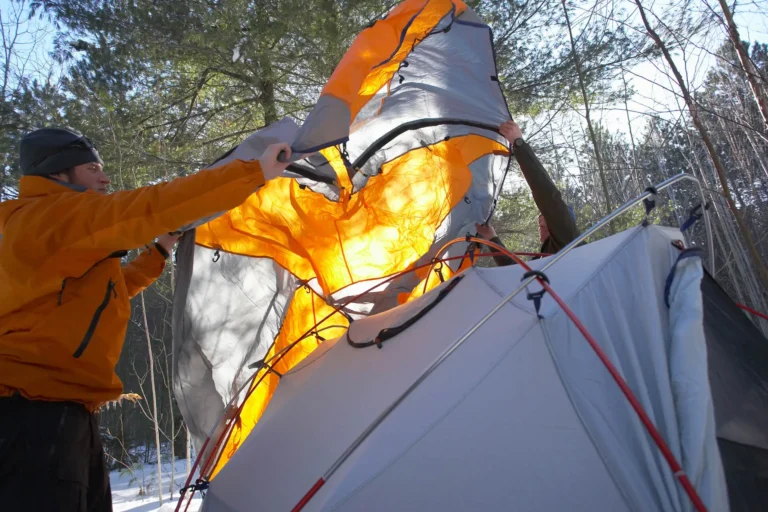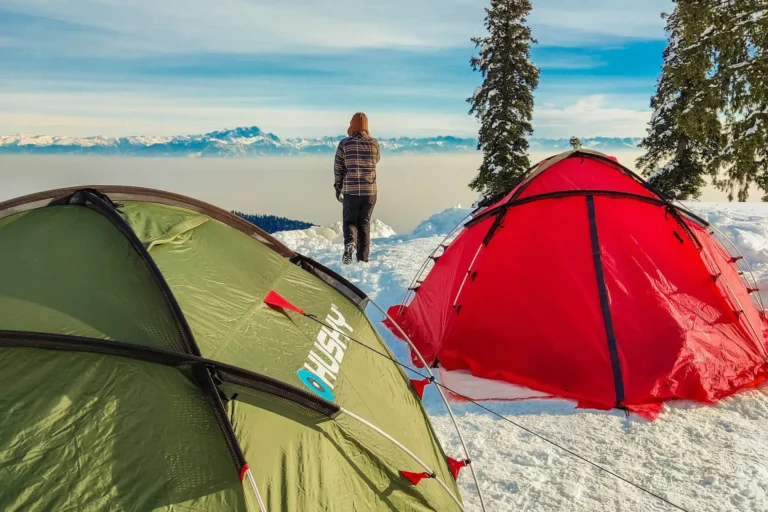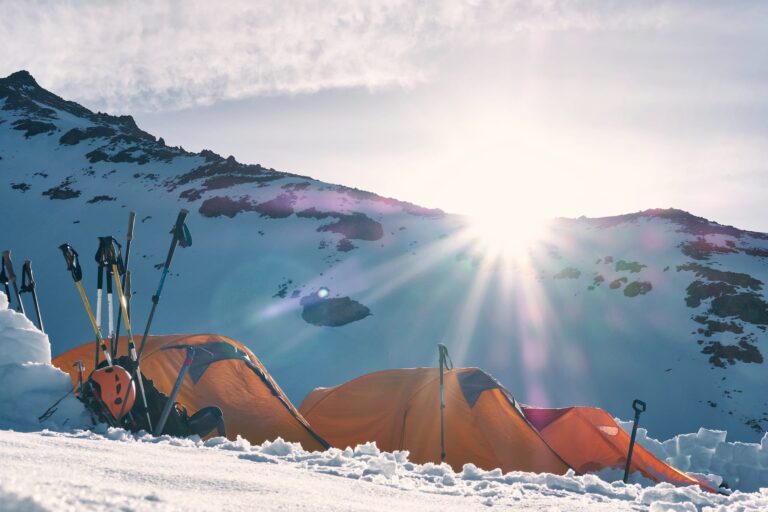How hot is a campfire:Tips and Tricks
How soon did you light the campfire? If you are a campfire pro, have the right fire building tools, and can determine which wood burns the fastest. I believe you can successfully light a campfire in less than 3 minutes.
But if you are new to campfires, you will need more patience and practice to make sure that you become more and more proficient at starting a campfire. Whether you want to impress your friends with your campfire cooking or just want to have a good old time under the stars, this guide is for you. We’ll show you how to build a fire like a true woodsman and give you tips and tricks to make the most of your time in the great outdoors.
Welcome to Ignite the Campfire!
How Hot Is A Campfire?
A campfire can get pretty hot, let me tell you! The temperature of a campfire can vary depending on how big it is and what materials are being burned.
The core and the plume are the two different parts of a campfire. Red hot coals can be seen in the center, where the flames are fiercest. There are no flames at all in the plume, which is above the fire. You’ll use the smoke plume if you’re trying to cook something or keep warm.

The flame of a campfire can burn at a core temperature between 1500°F and 1650 °F (815°C and 898°C).
Above the flame, where you can’t see the flame (called the thermal plume zone), you should expect temperatures of about 600°F (320°C). The temperature decreases with distance from the flame.
Large campfires (like a bonfire) can reach temperatures more than 2000°F (1100°C).
So don’t underestimate the heat of the campfire.
That’s hotter than a jalapeño pepper on a midsummer’s day! It’s hot enough to fry some sizzling bacon and eggs in a cast-iron skillet or roast some marshmallows until they’re gooey and golden brown. It’s also dangerous, and you don’t want to get too close to a roaring campfire, but if you use common sense and keep a respectful distance, you can enjoy its warmth and beauty without getting burned.

Why do we need build a campfire?
The real question that remains, now that we know how hot a typical campfire can get, is this: Why would anyone want to light a fire in the first place?
A common camping activity that brings people together and creates lasting memories is building a campfire. Sitting around a fire with friends and family, roasting marshmallows and sharing stories, we experience a sense of connection to each other and to nature.

Building a campfire is a common way for Americans to connect with their roots and honor the traditions of their ancestors. It’s a way to honor the settlers and explorers who used campfires to cook, light their homes, and provide warmth. The fire has been burning as long as the world has been turning, as the saying goes. But building a campfire isn’t just about nostalgia and tradition. It also serves a practical purpose.
Cooking
Whether you’re at the campsite or just in your own backyard, cooking over an open flame is a great way to connect with nature and enjoy delicious food.
There’s something special about the way food tastes when it’s cooked over an open flame. It’s smoky, savory, and just plain delicious.
We have been cooking food over a blazing fire for countless years. Many still do it today. Although modern campers have several alternatives for cooking, including gas stoves and other campfire cooking equipment.
A fire is important for storing food and water if you become stranded in the woods. While camping, preparing food and boiling water will allow you to consume both without getting sick.

When using a campfire for cooking, be aware of the melting point of the metal. Keeps you from melting the cookware while cooking.
- Aluminum: 1220°F (660°C)
- Aluminum Alloy:
Aluminum-tin alloy 536°F (280°C)
Aluminum-chromium alloy 1112°F (600°C)
Aluminum-zinc alloy 788°F(420°C)
Aluminum-manganese alloy 1220°F(660°C)
Aluminum-copper alloy 1220°F(660°C) - Cast iron: 2060°F (1127°C)
- Stainless steel: 2750°F (1510°C)
- Polypropylene plastic: 338°F (170°C).
Use caution! Some camping cookware is made of aluminum, which can melt if dropped into a fire. Consider sticking with stainless steel so that at least you can reuse it when it cools.
Some of the most common meats are listed here, along with the internal temperatures you should aim for when cooking them over a campfire.
- Steak (rare) 118ºF (48°C)
- Steak (medium) 136ºF, (58°C)
- Steak (well done) 154ºF (68°C)
- Lamb leg (medium-rare) 135ºF (57°C)
- Pork tenderloin 145ºF (63°C)
- Chicken breast 165ºF (74°C)
Warmth
We all know that fire is hot. Our biology is better at removing excess heat from our bodies than retaining it. So a campfire allows you to keep your body warm before you go to sleep in your tent.

You can also use a campfire to dry your wet clothes, shoes, and other gear.
As a Tool
The use of fire to scare away dangerous animals is effective. Typically, you are afraid of fire and understand its danger. This partly explains why you feel more comfortable sitting next to a fire, as you naturally feel safer from the boogeyman.

In addition, fire is useful for a variety of crafts. Writing and drawing can be done with charcoal. When shaping wood for large projects such as boats or cutting trees, fire is a much more effective tool than hand tools. You can burn the wood gradually rather than spending a lot of time and energy cutting or scraping it away.
People also burn stalks or cornstalks and other plants and sow them in the ground to add nutrients to the soil and help crops grow.
Gathering around the campfire
Campfire gatherings have been around for a long time. Sitting around the campfire, we roast hot dogs, marshmallows, and other tasty snacks, tell stories, do campfire activities, and take a break.

What do the different colors of the flame temperature mean?
The color of a campfire can be an indicator of its temperature. Typically, campfires are a mixture of the colors yellow, orange, and red.
So you might be able to tell the average heat of your fire just by looking at it.

Here’s a breakdown of what different campfire colors can mean in terms of flame temperature:
Dark Red – Usually seen on embers that continue to burn slowly after the main fire has died down. This hue gives off heat between 900 and 1100° F (500 to 600 °C).
Dull Red – Before they actually start to burn brightly, most campfires are a dull red. Between 1100 and 1650 °F(600 to 800 °C) are dull red flames or embers.
Bright Red – The embers become brighter and brighter as your fire burns more vigorously. At this point, their temperature ranges from 1650 to 1800 °F (800 to 1000 °C).
Orange – The interesting thing is that the flame itself is hotter than the core temperature. This occurs as a result of the fire burning gases from your fuel as well as the air (i.e. wood). Between 1800 and 2100 °F for orange flames (1000 to 1200 °C).
Bright Yellow – The hottest part of the fire is often the bright yellow tips of the flames. The temperature range of these tips is 2100 to 2500 °F (1200 to 1400 °C).
White – Getting a fire hot enough to see white flames is pretty rare. However, it is possible if you’re building a large campfire. The flames are currently between 2500 and 2900 °F (1400 to 1600 °C).
Blue – Because there is more oxygen in the mixture when natural gas is burned, blue flames are common and make the flame burn brighter. Campfires are often not blue because the core doesn’t have much oxygen. However, the flames burn at a temperature of 2600 to 3000 °F (1450 to 1650 °C).
Regardless of the temperature, blue is the hottest of these fire colors. Their list goes like this: Blue>White>Yellow>Orange>Red tones.
What factors affect the heat of a campfire
Fuel, oxygen, and heat are the three things fire needs to live. If any one of these is taken away, the fire will go out.
While heat is a result of combustion, we’ll focus instead on how the size of your fire affects its temperature.
Types of fuel
Wood is the most common fuel source for campfires. But you can also burn coal or charcoal, or add an accelerant such as lighter fluid. But different types of wood also have different levels of heat output. Hardwoods like oak and hickory tend to burn hotter and longer than softwoods like pine.

Wood moisture
Green or wet wood may be more difficult to ignite and burn at a lower temperature than dry wood. Choose seasoned wood that has been dried for at least six months for best results.
Fire Size
Small flames can still reach temperatures comparable to larger ones. However, they don’t feel as hot because they are smaller and don’t give off as much radiant heat.
Large campfires and bonfires tend to burn hotter because there is more fuel and air available for combustion.
Wind
A fire can be helped or hindered by wind. A light breeze can help start the fire, but too much wind will take away heat from the fire and make it harder to maintain.
Altitude
Because the air is thinner at higher elevations, there is less oxygen available to feed the fire. This can make it more difficult to start and maintain a hot fire.
Fuel placement
How you place the fuel in the fire also affects how much heat the fire will produce. Starting with smaller kindling and adding larger logs as the fire grows is a wise strategy.
Pro Tips: The wood used to start the fire should not be piled closely together, and should be placed in the air, air ventilation, can make the burning material burn completely.
How to quickly build a campfire
If you want to build a campfire in a hurry, I think I can give you some pointers.
You’ll need some traditional firewood to start. Please do not take any green wood, okay? That stuff ain’t gonna burn worth a hill o’ beans. Find some dry wood that has been dead for a while.
Once you have your wood, be sure to position it properly. Some people choose to build a fire in the shape of a teepee, while others prefer a log cabin. In either case, remember to leave some room for air to get through, as this is what will keep your fire burning hot.

Now, Here’s a little trick: grab some birch bark or dried leaves and crumple them up. Throw them in the center of your firewood pile and light them. The birch bark and leaves will quickly catch fire and then spread to the rest of your wood.
You just have to keep throwing in some wood or other fuel like charcoal or dead branches to keep the campfire going as long as you want it to burn.
What kind of wood burns the hottest
Hardwoods often burn hotter than softwoods because there is more fuel available for ignition.
Because they are denser, hardwoods produce more heat and last longer. Oak, hickory, and cedar are usually the hottest and are the three most popular types of campfire fuel.
The many types of wood you can use for a campfire include:
Hickory – If you are using skewers and cooking over an open flame, this wood will add an extra layer of smokiness to your food. Hickory also doesn’t absorb much water, so it stays dry.
Ash – ash is the ideal wood for campfires because it produces no smoke or ash. It also doesn’t hold moisture very well and is light.
Oak – Oak burns more slowly than other hardwoods, making it a better choice for stews and other foods that require a longer cooking time. You also don’t have to worry about accidental sparks flying through the air.
Mesquite wood – Don’t forget about mesquite wood, which is also known for its high heat output and distinct flavor. It’s a popular choice for grilling and smoking meats in the southern United States.
Cedar – While this wood doesn’t produce a lot of flames, it does get very hot. This makes cedar ideal for cooking over a campfire or keeping your campsite comfortable all night.
But hey, why don’t you head on down to your local hardware store or lumber yard and ask the experts? They’ll be happy to help you find the perfect wood for your needs.
Fire Safety Tips
While burning, campfires must be carefully managed or they can be extremely dangerous and destructive. Here are some tips for managing your campfire.
Use caution when burning plants. Smoke from some plants, including rhododendron and oleander, can cause health problems. Also, never burn treated or pressure-treated wood in a fire you intend to use for cooking. The same applies to prefabricated building materials, but cook with wood from trees.
Have water on hand for emergencies. Splashing water on a scattered ember is preferable to leaving it alone and allowing it to start a larger fire. You can go a step further by moistening the soil around your fire pit, but if you start a big fire, it will dry out very quickly.
Always keep an eye on your fire. If something happens, it will happen immediately. If you’re present, you can usually act quickly to extinguish the fire and regain control, but an unattended fire can easily get out of hand and become deadly.
Build your campfire in a safe place. It is ideal to make a shallow pit about six inches deep and place your fire in it. Keep in mind that while dirt won’t burn, any plant material will. Clear the area around the fire pit of any debris, such as dead grass or fallen needles. Give yourself plenty of room to breathe.
Always keep your fire in a fire pit or other designated, unobstructed area. The fire may become difficult to control or dangerous if it spreads outside this area.

FAQ of Campfire
The best way to quickly and consistently lower campfire temperatures?
Following these instructions should prevent you from leaving behind a wildfire that could start again.
Before you leave, make sure the fire is completely out. You’ll need a lot of water because it quickly dissipates the heat generated by the coals.
Get a fire poker and scatter the still burning coals or logs before putting out the fire. By scattering them, you remove the structure that promotes airflow and speeds cooling.
A fire can be buried to extinguish it, but coals can burn for a long time even when buried. The best course of action is to repeatedly douse the fire with water to extinguish it.
Pour water over the remaining coals. It’s okay if it sputters, smokes, and steams. Give it some time, then repeat the process.
How hot should a campfire be to be comfortable?
Depending on the use of the campfire and personal preference, the appropriate campfire temperature will vary. Typically, a temperature between 400 and 600 °F (200 and 300 °C) is good for comfort and relaxation around the fire. However, when cooking over a fire, the temperature will change depending on the recipe and cooking technique.
How hot are campfire coals?
Wood coals ignite at around 3-600 °C. Adding a lot of oxygen will make them hotter, but the best way to tell is by the color of the coals. Based on black body radiation, which is a decent approximation since coals are black, you start to see a glow at about 500°C and can clearly see it at about 600 °C. At about 800°C it starts to get more yellow, and at 1200°C it is almost white.
Conclusion
The knowledge you gained about campfire heat can be applied to your upcoming outdoor adventure.
